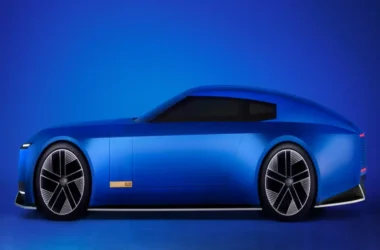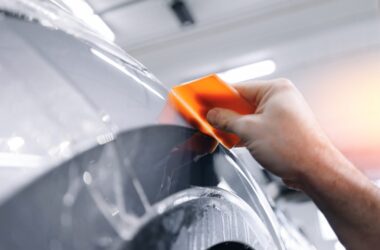Adult electric scooters are becoming one of the most popular ways to get around towns and cities. They’re fast, fun, and easy to use, but they also require practice and safety awareness. Whether you’re riding for the first time or just want to brush up on the basics, this guide will walk you through everything you need to know — from starting the electric scooter to staying safe on the road.
1. Launch by Kicking off the Ground
Kick-start your electric scooter the right way.
To get moving, first turn on your scooter and raise the kickstand while holding onto the handlebars for balance. After closing the kickstand, place your strong foot on the deck and use your other foot to push off the ground. Once you’ve built up a little speed (around 3 mph), gently press the throttle to let the motor take over.
Balance matters.
Stand with one foot in front of the other, just like you would on a skateboard or snowboard. This position keeps you steady and helps you adjust when the road gets bumpy. Avoid standing with your feet side by side because it makes it harder to balance. Shift your stance every now and then to stay comfortable and stable.
Scooter Fact: Most scooters are designed with a “kick-to-start” feature, meaning the motor won’t engage until you give it a small push. If your scooter has performance settings, you can switch to “zero start,” which allows the scooter to move as soon as you press the throttle.
2. Grip the Handlebars With Both Hands
Always ride with both hands firmly on the handlebars. This gives you better control over speed, braking, and direction. You’ll also be ready to react quickly if you hit an obstacle or need to turn suddenly.
Scooter Fact: Unlike bicycles, scooter tires are much smaller (usually 8–12 inches compared to 12–26 inches for bikes). Because of this, scooters don’t handle no-hands riding well. Always keep your hands on the handlebars for safety.
3. Press the Throttle Steadily
The throttle controls your speed. Instead of pressing it down hard, apply steady, gentle pressure. This will help you accelerate smoothly without jerking forward. As you get more confident, you can slowly increase the pressure to reach higher speeds.
Scooter Fact: Some scooters use sensitive throttle systems, like trigger-style throttles. These need more control and practice to avoid sudden acceleration.
4. Steer by Turning and Leaning
Scooter steering works differently depending on your speed:
- At low speeds: Turn the handlebars gently to guide the front wheel.
- At higher speeds (5 mph or more): Lean your body into turns. This shifts your weight and helps you turn smoothly without losing balance.
Leaning with your body is the safest way to handle turns. Avoid sharp handlebar movements, especially at high speeds, as this can make you lose control.
Scooter Fact: Some scooters have a single stem, while others have dual stems. Dual-stem scooters provide more stability at high speeds, but they’re heavier. Single-stem scooters can be easier to maneuver but may require more effort to stay balanced.
5. Pull the Brakes Evenly
Braking properly is just as important as accelerating. To stop safely:
- Shift your weight slightly back and down.
- Apply even pressure on both brake levers.
Most scooters have two brakes — front and rear. The front brake is usually more powerful, but you should use both evenly to stay in control. If your scooter only has one brake, practice using it gently until you’re comfortable.
Scooter Fact: On most scooters, the left lever controls the rear brake and the right lever controls the front brake. Some smaller scooters use an electronic brake instead of a lever.
Do’s and Don’ts of Riding an Electric Scooter
Always Wear Safety Gear
Electric scooters may look simple, but they can be just as risky as bikes or motorcycles. Protective gear helps you stay safe from accidents, bad weather, and even small falls.
Recommended safety gear includes:
- A helmet (CPSC-certified)
- Eye protection (glasses or visor)
- Gloves
- Full-coverage shoes (sneakers or boots)
- Pads or protective clothing if riding at high speeds
Protect Your Head
Your helmet is the most important piece of gear. For speeds under 20 mph, a bicycle helmet is enough. For speeds above 25 mph, choose a full-face helmet with chin protection for extra safety.
Protect Your Eyes
Wear sunglasses or a helmet with a shield to protect against wind, dust, and debris.
Protect Your Hands
Gloves prevent injuries if you fall, and they keep your hands warm so you can control the brakes and throttle better.
Protect Your Feet
Closed-toe shoes protect your feet if you need to step off quickly or in case of an accident. Avoid sandals or slippers.
Protect Your Body
If you’re riding off-road or at high speeds, consider knee pads, elbow pads, or motorcycle-style protective clothing.
Practice Makes Perfect
Before riding in public, practice in a safe, open area like a parking lot. Wear your safety gear and get familiar with:
- Starting and stopping
- Throttle control
- Braking smoothly
- Steering and leaning into turns
Practice until you feel confident balancing and controlling the scooter.
Check Your Scooter Before Every Ride
Just like a car, scooters need regular checks. Do a “pre-flight” check before each ride:
- Make sure the folding mechanism is locked in place.
- Inspect tires for damage or low air pressure.
- Test the brakes.
- Check the battery level.
- Gently press the throttle to test the response.
Scooter Fact: Tires usually last between 1,500–3,000 miles depending on use, while brakes may need replacing after 100–500 miles.
Top 5 Common Mistakes to Avoid
- Riding without safety gear – Never skip your helmet.
- Pressing the throttle too hard – Always accelerate slowly and smoothly.
- Braking too hard – Sudden braking can throw you off. Apply brakes evenly.
- Overturning handlebars – Never make sharp handlebar turns at speed; lean instead.
- Leaning too much – Stay balanced over the center of the scooter.
Conclusion
Riding an electric scooter is a fun and practical way to travel, but it’s important to do it safely. Always wear your gear, practice before going into traffic, and check your scooter regularly. Take your time learning how to balance, steer, and brake smoothly.
Once you’re comfortable, riding will feel natural and enjoyable. Be a responsible rider, follow your local scooter laws, and most importantly — enjoy the ride!

















